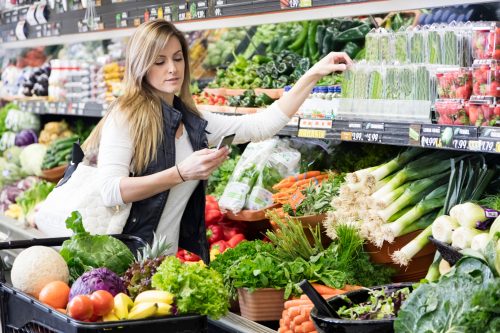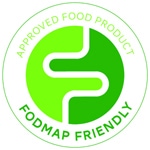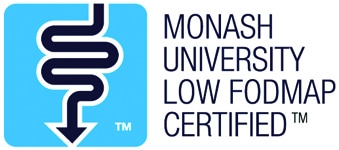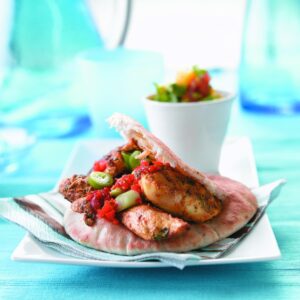
Grocery shopping on a low-FODMAP diet doesn’t have to be a chore. Dietitian Joanna Baker offers some simple tips for a stress-free shop.
If you’re following a low-FODMAP diet for a gastrointestinal disorder, you will know what a minefield grocery shopping can be. Unlike nuts or gluten, FODMAPs are not required to be highlighted on food labels, meaning people on a low-FODMAP diet often need to be FODMAP detectives to find suitable foods when grocery shopping. Here are some pointers to help you shop and eat with confidence.
1. Know which food groups contain FODMAPs
FODMAPs are short-chain carbohydrate molecules, which may be found in fruits, vegetables, grains and some dairy foods, such as milk and yoghurt. It’s important to know that not all carbohydrate molecules are FODMAPs, so some of these foods will be high FODMAP and others will be low FODMAP based on the balance of nutrients they contain.
2. Know what types of foods do not contain FODMAPs
Fresh cuts of meat, fats and oils are all FODMAP free in their natural state. Be wary of any sauces, marinades, coatings or flavours that are added as these can contain FODMAPs. The following products can usually be eaten with confidence:
- fresh meat, chicken and fish
- eggs
- cooking oils (olive, canola, sunflower, coconut oil, duck fat etc)
- butter (including ghee)
- hard and most soft cheeses
If you are unsure, check the nutrition information panel, if the amount of carbohydrate is very low (for example, 0-1g per serve) you can assume the product is low FODMAP.
3. Shop the perimeter
Most supermarkets keep whole foods around the perimeter. Think fruits, vegetables, meats, and dairy products. These foods often don’t need a label or, since they are minimally processed, have a very short ingredients list. This means, when you are learning to read labels, these products are less daunting and contain fewer places for FODMAPs to hide. For the same reason, whole grains are also easier to tackle. The ingredients on a bag of plain rice or quinoa, for example, is usually listed as ‘ingredients: rice’ or ‘ingredients: quinoa’.
4. Learn to read labels
At some point, you will need to learn to read ingredient labels. There are three things that are useful to know here:
- Most of the stuff on the front of a box is marketing and advertising. Some claims and logos are governed by law (eg, gluten free) while others are just marketing jargon eg, ‘refined sugar free’ or ‘superfood’. What you are really interested in, for FODMAPs, is on the back of the box in the ingredients list. This is where the product must list, in descending order, the ingredients used to create the product. This means that the ingredient listed first is present in the largest amount, and the ingredient listed last in the smallest amount. For example, if you see a loaf of bread that lists honey as the very last ingredient, it is unlikely that there will be enough in one slice to trigger a reaction. But if you are looking at a sauce or dressing and the second ingredient is honey, it is much more likely that the honey will be present in a large enough amount to be problematic.
- It’s good to know what sorts of foods are likely to contain FODMAPs. For example, a chutney is highly likely to contain onion or garlic, some light or lactose-free yoghurts contain inulin, mueslis and muesli bars often contain honey or dried fruits.
- Lastly, learn the high-FODMAP ingredients that can have alternate names. For example, inulin may be called chicory or dietary fibre, polyols may include sorbitol, mannitol or xylitol, and fruit fibre may be apple puree.
5. Look for the logos


Two logos identify packaged foods that have been tested for FODMAP content and have been scientifically identified and approved as being low FODMAP. In New Zealand, there is the FODMAP Friendly certification program, introduced to Kiwis in 2013. As well as this, look out for Monash University’s low-FODMAP certified icon on product packaging, or download the app for a complete list of certified products.
Helpful apps
Save yourself some frustration and grab the FODMAP Friendly or the Monash University Low FODMAP Diet smartphone app. These can help you identify which foods and ingredients are safe and which ones are potentially problematic.
www.healthyfood.com










